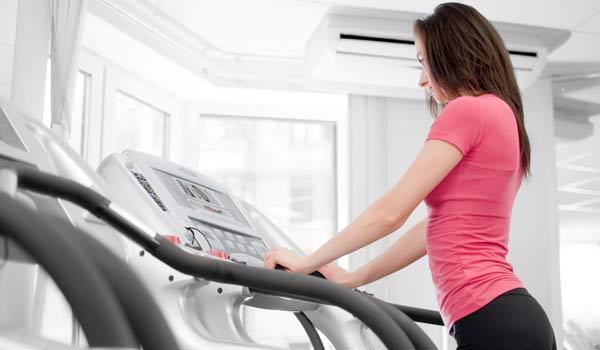People Who Exercise Get Better Sleep, Poll Finds

People who exercise, even lightly, report sleeping better than individuals who don't exercise, according to results from a new poll.
Among people who said they engaged in light, moderate or vigorous physical activity during the week, 56 to 67 percent reported that they "had a good night’s sleep," almost every night on week nights, the poll found. By contrast, just 39 percent of people who did not exercise at all reported sleeping this well on week nights. Exercisers were also less likely to report sleep problems compared to non-exercises. Just 8 percent of people who exercised vigorously said they had difficulty falling asleep almost every night, compared to 24 percent of non-exercisers.
Light physical activity was defined as walking; moderate physical activity included exercises such as weight lifting and yoga; and vigorous physical activity included exercises such as running, swimming or cycling. Participants rated their weekly physical activity as light, moderate, vigorous or none based on activities they performed for at least 10 minutes at a time.
Spending less time sitting was also linked to better sleep. About 22 to 25 percent of people surveyed who sat for less than eight hours a day reported that they enjoyed "very good" sleep, compared to just 12 to 15 percent of people who sat for more than eight hours.
The findings from the poll, conducted by the National Sleep Foundation, agree with one of the classic rules of sleep hygiene: "People who are active tend to sleep better," said Lisa Meltzer, a sleep psychologist at National Jewish Health in Denver, who was not involved in the poll.
However, it's important to note that the poll only found an association, and cannot prove that exercise actually helps people sleep. It could be that people who don't sleep well are too tired to exercise.
In addition, people who exercise tend to have routines, such as going to bed and waking up at the same time every day, which can benefit sleep. When people are very busy, they end up sacrificing both sleep and exercise for work or other activities, Meltzer said.
Sign up for the Live Science daily newsletter now
Get the world’s most fascinating discoveries delivered straight to your inbox.
While the quality of sleep was poorer for people who didn't engage in physical activity, both exercisers and non-exercisers reported getting similar amounts of sleep — about seven hours a night.
Because exercise may cause weight loss, it may also improve symptoms of sleep apnea, a condition often linked to obesity, Meltzer said. People who have sleep apnea stop breathing for brief periods during the night.
Contrary to popular belief, even exercising close to bedtime improved sleep in the people who were polled. Individuals who exercised at any time of the day slept better than those who didn't exercise, the poll found.
Because of these results, the National Sleep Foundation has changed its recommendations on exercise and sleep to encourage exercise at any time of the day or evening, unless exercising is done at the expense of sleep. However, people with chronic insomnia should still not exercise close to bedtime, Meltzer said, as this may make it difficult for them to sleep.
The results are based on a survey of 1,000 U.S. adults ages 23 to 60. Close to 50 percent of participants were light exercisers, 25 percent were moderate exercisers, 18 percent were vigorous exercisers, and 9 percent were non-exercisers.
Pass it on: People who exercise sleep better than people who don't, according to results for a new poll.
This story was provided by MyHealthNewsDaily, a sister site to LiveScience. Follow Rachael Rettner on Twitter @RachaelRettner, or MyHealthNewsDaily @MyHealth_MHND. We're also on Facebook & Google+.

Rachael is a Live Science contributor, and was a former channel editor and senior writer for Live Science between 2010 and 2022. She has a master's degree in journalism from New York University's Science, Health and Environmental Reporting Program. She also holds a B.S. in molecular biology and an M.S. in biology from the University of California, San Diego. Her work has appeared in Scienceline, The Washington Post and Scientific American.









